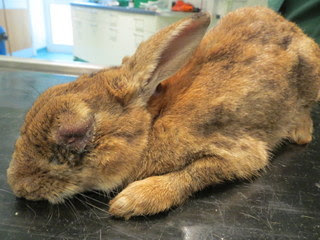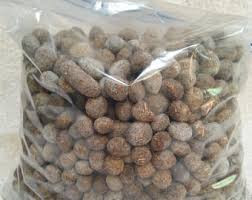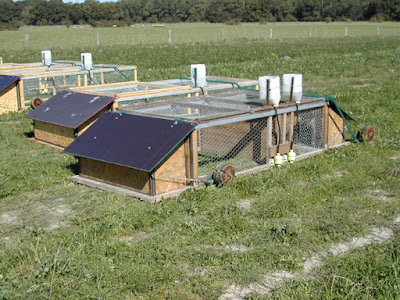WHAT, WHY , WHEN AND HOW FOR RABBIT MEAT PRODUCERS
QUESTIONS RABBIT MEAT PRODUCERS OFTEN ASK
QUESTION ASKED:
WHY SHOULD I RAISE RABBITS? ARE THEY ANY BETTER THAN OTHER DOMESTIC LIVESTOCK?
Rabbit farming is very rewarding because of the following reasons:- Rabbits are the most productive of domestic livestock. A rabbit only takes 6 months to mature sexually. Their gestation period is only 30 days and on average, a female rabbit gives birth to 30 young ones per year.
- They are very cheap and easy to feed as they mainly feed local weeds and water. You can as well feed them on rabbit pellets if you can afford them.
- They occupy little space hence suitable for most rural farmers who are small scale.
- They are quiet animals that can be raised in any environment.
- They rarely get sick unless kept in unhygienic conditions.
- Their meat is white, high in protein and low in fat and cholesterol.
- Its health advantages make it high on demand especially in institutions such as restaurants and hospitals
Related: Why health experts recommend rabbit meat
WHAT DO RABBITS FEED ON?
Greens to avoid: Lettuce (cause diarrhea), parsnips, swedes, and tomato leaves.
Advised feeds: Hay (dried and free of mold), pellets, clover, carrots, peanuts, oats, wheat, barley and corn. A block of salt should be put in each cage for them. Salt contain nutrients needed for body nourishment but also, salt dehydrates rabbits forcing them to drink a lot of water. The more water they drink, the bigger they grow.
WHAT ARE THE COMMON DISEASES RABBITS SUFFER FROM?
Rabbit sickness can be avoided by simply keeping the hutch clean. However, the Common rabbit diseases include snuffles and coccidiosis. Infected rabbits can be treated with antibiotics; Sulphamezathine, Amprol or Sulfaquinoxaline. Follow the directions for each medication carefully. Infected animals should be isolated and the cage sanitized to prevent further contamination.
HOW DO I KNOW A RABBIT IS SICK?
 |
| 20 Signs a rabbit is sick |
It is important to carefully examine each rabbit closely before you buy. The inside of the rabbits ears should not have the dry scabs that are caused by ear mites.
Put the rabbit on the floor and watch it run. It should not lean on one side, its hocks and feet should be free of sore spots, its nose shouldn’t be wet, runny, or crusty, and its droppings should be firm and round. If the rabbit looks fit in these areas, then you’ve found a healthy rabbit!
HOW OFTEN ARE RABBITS FED?
It is advisable that they are fed twice a day.
WHEN DO THE RABBIT YOUNG ONES STOP BREASTFEEDING?
 |
| young rabbits suckling |
The young ones to a rabbit are called litters. They are born hairless and with closed eyes. Fur grows from day 5 to 6 and eyes open from day 10 to 12. After 3 weeks they are weaned off milk by the does (female rabbit) and will start eating hay and pellet. At the age of 8 to 10 weeks, young rabbits are separated from their mothers and put into their individual cages. This is to prevent fighting.
WHAT RABBIT BREED IS BEST FOR MEAT PRODUCTION?
There are many rabbit breeds that are good for meat production. Among them are: Chinchilla, Palomino, Flemish giant, Angora etc. However, the most suitable meat producers preferred are New Zealand White and Californian White. These two breeds grow very fast, weigh heavy and reproduce more rapidly.
Related: Rabbit breed descriptions
WHAT BREED IS BEST FOR FUR PRODUCTION?
Angora and Rex are fluffy thus the best for fur production.
HOW DO I CONSTRUCT A RABBIT HOUSE?
When constructing a rabbit house remember:The housing should provide plenty of light and fresh air.
The hutch should be roofed to protect them from the sun especially if they are kept for fur. Sun destroys the fur.
During hot summers, sprinklers systems should be placed on the roofs to cool the hutches.
The cage should be 3 feet square for each rabbit.
The rabbit hutch should be raised above the ground for easier collection of droppings and urine.
The hutch must always be clean to prevent illnesses. Rabbits easily fall sick when they come into contact with their wastes so the hutch should be cleaned daily.
Sample rabbit housing design model
APART FROM THE MEAT, WHAT ELSE IS USEFUL ON THE RABBIT BODY?
Everything on the rabbit body is useful!
The skin
- Used for making winter clothing such as gloves, scarfs, boots & jackets
- Best for making fishing rods
- Used for making ornaments in Asian countries
 |
| Garden-rabbit-fertilizer |
When mixed with water in the ratio 1:30 (urine to water), rabbit urine can be used a direct insecticide and liquid fertilizer on the farm.
The droppings
- It is the best composite manure because it contains the highest contents of ammonia and nitrogen essential for plant growth. It also contains phosphorous and potassium.
- Unlike other manures, it does not produce a strong smell.
- Rabbit manure is cold manure i.e. it does not burn crops when applied directly like other manures.
- When mixed with water, rabbit droppings make manure tea that can be used as liquid fertilizer on the farm.
- Rabbit droppings are useful to people who practice vermiculture (worm farming) as the worms feed on the droppings.
- Fresh rabbit droppings are food to fish.
Other benefits of rabbit manure


